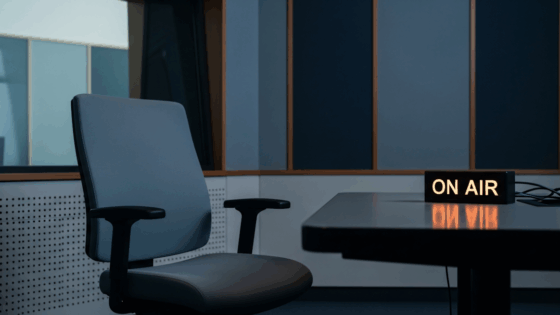on
BY SIMONE J. SMITH
This is incredible. I could feel the music in my bones. This place had such a cool vibe. I could already feel the energy. I arrived at the perfect time. I had got just enough time to grab a drink before the show started. The lights were dim, and the crowd cheered as the band took the stage. The band started playing a slow, soulful tune. The music built gradually, layering complex rhythms with rich melodies. The music suddenly shifted into an upbeat, energetic groove. The way they blended the traditional jazz elements with electronic sounds… It was like nothing I had ever heard! This is why I love live music! You can’t replicate this feeling!
It was Thursday, August 15th, 2024, and the Toronto Caribbean Newspaper had been invited to My House (located at 2882 Dundas St W, Toronto, ON, M6P 1Y8) where they were proudly presenting National Jazz Award winners for “electric jazz group of the year”, the Brownman Electryc Trio, up from Brooklyn, NY and on tour in Ontario in August, and whom NPR (National Public Radio) in New York City has called “the new standard in electric-jazz”. I was here to enjoy a night of modern funkified jazz in the vintage majesty that is My House!
Imagine a charming venue that feels like a welcoming home, filled with a cozy ambiance that immediately puts guests at ease. The space is designed with an intimate, homely touch, featuring plush couches strategically placed around the room for comfortable seating and conversation. Soft, flickering candles are scattered throughout, casting a warm, gentle glow that dances on the walls, enhancing the venue’s serene and calming atmosphere.
There were long dinner tables, elegantly set with: fine china, glassware, and tasteful centerpieces, stretched across the room, inviting guests to gather for shared meals and engaging conversations. The lighting is subdued, with dim, overhead fixtures and soft, accent lighting that adds depth and warmth to the space. The overall atmosphere was both relaxed and sophisticated, making it a perfect setting for a night of electric jazz. So, who was I here to see?
Making a full-time living as a performing professional musician isn’t easy. Making a living as a musician in a niche genre like jazz can be even harder and making a living in jazz as a West Indian in a “small” market like Canada that is spread out over a massive land mass is just about the hardest of all. This is what makes Brownman Ali — a multi-award-winning Trinidadian-born: trumpeter, bandleader and composer — such a special case worthy of examination.
He has been awarded the: 2007: National Jazz Award “Electric Jazz Group of the Year”, 2011: Trinidad High Commission citation: “Distinguished National”, 2013, 2015, 2016: 3x Toronto Independent Music Award winner, 2014: International Independent Music Award winner, 2019: International Songwriting Competition finalist, 2023: International Songwriting Competition winner, and was a 2024: JUNO Award nominee
He has triumphantly forged a successful career in a field filled with obstacles and done it in an uncompromising fashion. He has done so by staying true to his vision of propagating his own brand of: funkified, exploratory modern jazz that amazingly builds novel entertainment from the seemingly antithetical building blocks of complex compositional, rhythmic, and improvisational structures.
His music is informed heavily by an urban music aesthetic— encompassing everything from hip hop and r&b to house, jungle and dubstep—which he readily acknowledges has often placed him outside jazz’s more polite and inoffensive mainstream. That of course is quite normal for Caribbean people. We are always adding our dash of spice to everything that we do.
For fans of jazz, the stylistic primogenitors of the Electryc Trio are easy to discern. First and foremost is the music of Miles Davis, especially from the period that began with the 1969 albums “In a Silent Way” and “Bitches Brew.” On Bitches Brew, Miles Davis took jazz music and altered its acoustic traditions towards the electrified and amplified sounds of contemporary funk and rock music. This included “electrifying” his horn through the use of various effects.
I was proud to be witnessing Brownman (born “Nick Ali”) and his Electryc Trio on a night in live performance. His performance is evidence of why this group has become such a crowd-pleasing draw over the last few years. Brownman’s preference for playing in smaller ensembles has dominated, and his talents as an improviser have grown stronger. The ensemble includes: Brownman Ali (electric trumpet and compositions), Josh Cohen (6-string electric bass), and Adam Mansfield (drums).
The combination of the three players is a sound that often seems greater than the sum of its parts. “I can’t believe there’s only three of them up there” is a comment frequently heard at BET shows. They achieve that illusion through sheer musicianship on the one hand, and clever use of electronic effects on the other. There is definitely a chemistry the trio has that can only be called astounding.
This is what live music was all about on August 15th—pure connection. You can hear them on Spotify: www.Spotify.Browntasauras.com
Stay in the loop with exclusive news, stories, and insights—delivered straight to your inbox. No fluff, just real content that matters. Sign up today!
We, as humans are guaranteed certain things in life: stressors, taxes, bills and death are the first thoughts that pop to mind. It is not uncommon that many people find a hard time dealing with these daily life stressors, and at times will find themselves losing control over their lives. Simone Jennifer Smith’s great passion is using the gifts that have been given to her, to help educate her clients on how to live meaningful lives. The Hear to Help Team consists of powerfully motivated individuals, who like Simone, see that there is a need in this world; a need for real connection. As the founder and Director of Hear 2 Help, Simone leads a team that goes out into the community day to day, servicing families with their educational, legal and mental health needs.Her dedication shows in her Toronto Caribbean newspaper articles, and in her role as a host on the TCN TV Network.













